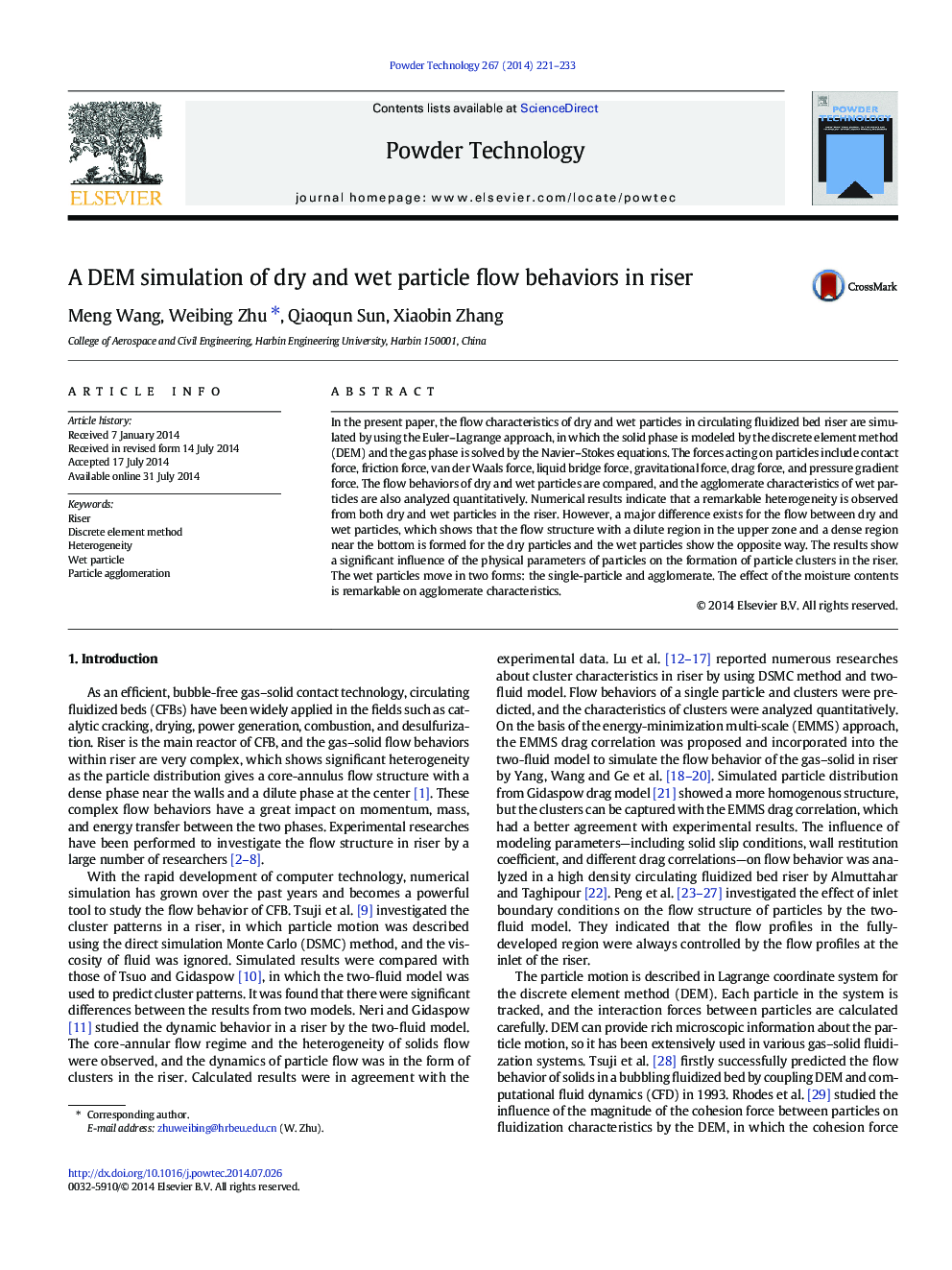| کد مقاله | کد نشریه | سال انتشار | مقاله انگلیسی | نسخه تمام متن |
|---|---|---|---|---|
| 236015 | 465656 | 2014 | 13 صفحه PDF | دانلود رایگان |

• The flow characteristics of dry and wet particle in riser are compared.
• The flow behaviors of wet particle under different moisture contents is studied.
• Agglomeration characteristic of wet particle is analyzed quantitatively.
In the present paper, the flow characteristics of dry and wet particles in circulating fluidized bed riser are simulated by using the Euler–Lagrange approach, in which the solid phase is modeled by the discrete element method (DEM) and the gas phase is solved by the Navier–Stokes equations. The forces acting on particles include contact force, friction force, van der Waals force, liquid bridge force, gravitational force, drag force, and pressure gradient force. The flow behaviors of dry and wet particles are compared, and the agglomerate characteristics of wet particles are also analyzed quantitatively. Numerical results indicate that a remarkable heterogeneity is observed from both dry and wet particles in the riser. However, a major difference exists for the flow between dry and wet particles, which shows that the flow structure with a dilute region in the upper zone and a dense region near the bottom is formed for the dry particles and the wet particles show the opposite way. The results show a significant influence of the physical parameters of particles on the formation of particle clusters in the riser. The wet particles move in two forms: the single-particle and agglomerate. The effect of the moisture contents is remarkable on agglomerate characteristics.
A remarkable heterogeneity is observed from both dry and wet particles in the riser. However, a major difference exists for the flow between dry and wet particles, which shows that the flow structure with a dilute region in the upper zone and a dense region near the bottom is formed for the dry particles, and the wet particles show opposite.Figure optionsDownload as PowerPoint slide
Journal: Powder Technology - Volume 267, November 2014, Pages 221–233